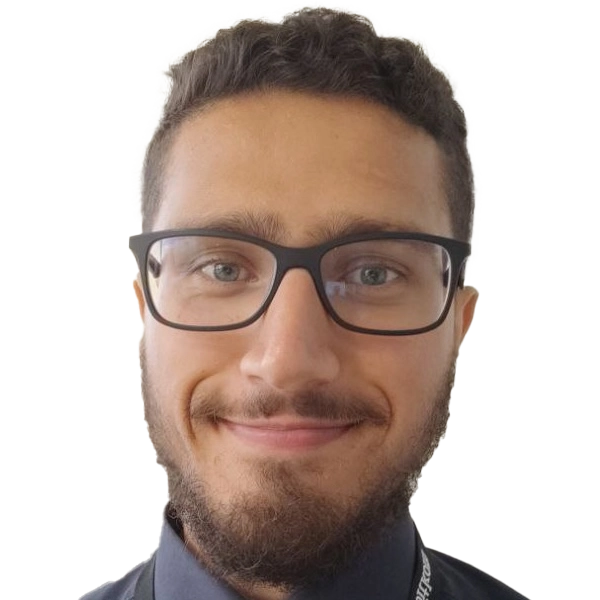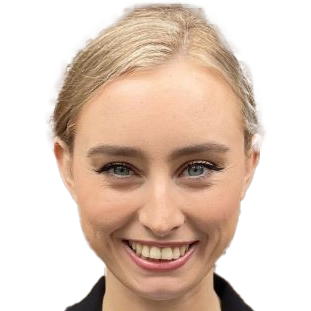Research Group Hinrich Schütze
Hinrich Schütze
holds the Chair of Computational Linguistics at LMU Munich.
His primary focus is linguistically-informed Neural NLP: His team uses deep understanding of language in its research and believes in the principle that learning is key to successful NLP – the same way that the language capabilities of humans are based on learning. The research areas are representation learning, multilinguality, machine learning for low-resource scenarios, cognitively motivated deep learning, linguistically informed deep learning (especially for morphology), digital humanities, and the intersection of NLP and robotics.
Team members @MCML
PostDocs
PhD Students
Recent News @MCML
Publications @MCML
2025
[178]
I. Ziegler • A. Köksal • D. Elliott • H. Schütze
CRAFT Your Dataset: Task-Specific Synthetic Dataset Generation Through Corpus Retrieval and Augmentation.
Transactions of the Association for Computational Linguistics 13. Dec. 2025. DOI
CRAFT Your Dataset: Task-Specific Synthetic Dataset Generation Through Corpus Retrieval and Augmentation.
Transactions of the Association for Computational Linguistics 13. Dec. 2025. DOI
[177]
Z. Cai • W. Hua • K. Li • Y. Ma • E. Nie • H. Schütze • K. Stanczak • M. E. Taylor
ICLR 2026 Workshop on Memory for LLM-Based Agentic Systems (MemAgents).
Preprint (Dec. 2025). URL
ICLR 2026 Workshop on Memory for LLM-Based Agentic Systems (MemAgents).
Preprint (Dec. 2025). URL
[176]
P. H. L. de Araujo • M. A. Hedderich • A. Modarressi • H. Schütze • B. Roth
Persistent Personas? Role-Playing, Instruction Following, and Safety in Extended Interactions.
Preprint (Dec. 2025). arXiv
Persistent Personas? Role-Playing, Instruction Following, and Safety in Extended Interactions.
Preprint (Dec. 2025). arXiv
[175]

X. Wang • M. Wang • Y. Liu • H. Schütze • B. Plank
Refusal Direction is Universal Across Safety-Aligned Languages.
NeurIPS 2025 - 39th Conference on Neural Information Processing Systems. San Diego, CA, USA, Nov 30-Dec 07, 2025. To be published. Preprint available. URL
Refusal Direction is Universal Across Safety-Aligned Languages.
NeurIPS 2025 - 39th Conference on Neural Information Processing Systems. San Diego, CA, USA, Nov 30-Dec 07, 2025. To be published. Preprint available. URL
[174]
L. Veloso • L. Hirlimann • P. Wicke • H. Schütze
SLAyiNG: Towards Queer Language Processing.
QueerInAI @NeurIPS 2025 - Queer in AI Workshop at the 39th Conference on Neural Information Processing Systems. San Diego, CA, USA, Nov 30-Dec 07, 2025. arXiv
SLAyiNG: Towards Queer Language Processing.
QueerInAI @NeurIPS 2025 - Queer in AI Workshop at the 39th Conference on Neural Information Processing Systems. San Diego, CA, USA, Nov 30-Dec 07, 2025. arXiv
[173]
P. Mondorf • M. Wang • S. Gerstner • A. D. Hakimi • Y. Liu • L. Veloso • S. Zhou • H. Schütze • B. Plank
BlackboxNLP-2025 MIB Shared Task: Exploring Ensemble Strategies for Circuit Localization Methods.
BlackboxNLP @EMNLP 2025 - 8th Workshop on Analyzing and Interpreting Neural Networks for NLP at the Conference on Empirical Methods in Natural Language Processing. Suzhou, China, Nov 04-09, 2025. DOI
BlackboxNLP-2025 MIB Shared Task: Exploring Ensemble Strategies for Circuit Localization Methods.
BlackboxNLP @EMNLP 2025 - 8th Workshop on Analyzing and Interpreting Neural Networks for NLP at the Conference on Empirical Methods in Natural Language Processing. Suzhou, China, Nov 04-09, 2025. DOI
[172]

Y. Liu • R. Chen • L. Hirlimann • A. D. Hakimi • M. Wang • A. H. Kargaran • S. Rothe • F. Yvon • H. Schütze
On Relation-Specific Neurons in Large Language Models.
EMNLP 2025 - Conference on Empirical Methods in Natural Language Processing. Suzhou, China, Nov 04-09, 2025. DOI GitHub
On Relation-Specific Neurons in Large Language Models.
EMNLP 2025 - Conference on Empirical Methods in Natural Language Processing. Suzhou, China, Nov 04-09, 2025. DOI GitHub
[171]

N. Nikeghbal • A. H. Kargaran • J. Diesner
CoBia: Constructed Conversations Can Trigger Otherwise Concealed Societal Biases in LLMs.
EMNLP 2025 - Conference on Empirical Methods in Natural Language Processing. Suzhou, China, Nov 04-09, 2025. DOI GitHub
CoBia: Constructed Conversations Can Trigger Otherwise Concealed Societal Biases in LLMs.
EMNLP 2025 - Conference on Empirical Methods in Natural Language Processing. Suzhou, China, Nov 04-09, 2025. DOI GitHub
[170]

Z. Peng • X. Yin • R. Qian • P. Lin • Y. Liu • H. Zhang • C. Ying • Y. Luo
SolEval: Benchmarking Large Language Models for Repository-level Solidity Smart Contract Generation.
EMNLP 2025 - Conference on Empirical Methods in Natural Language Processing. Suzhou, China, Nov 04-09, 2025. DOI GitHub
SolEval: Benchmarking Large Language Models for Repository-level Solidity Smart Contract Generation.
EMNLP 2025 - Conference on Empirical Methods in Natural Language Processing. Suzhou, China, Nov 04-09, 2025. DOI GitHub
[169]

Z. S. Taghavi • A. Modarressi • Y. Ma • H. Schütze
ImpliRet: Benchmarking the Implicit Fact Retrieval Challenge.
EMNLP 2025 - Conference on Empirical Methods in Natural Language Processing. Suzhou, China, Nov 04-09, 2025. DOI GitHub
ImpliRet: Benchmarking the Implicit Fact Retrieval Challenge.
EMNLP 2025 - Conference on Empirical Methods in Natural Language Processing. Suzhou, China, Nov 04-09, 2025. DOI GitHub
[168]

M. Wang • L. Lange • H. Adel • Y. Ma • J. Strötgen • H. Schütze
Language Mixing in Reasoning Language Models: Patterns, Impact, and Internal Causes.
EMNLP 2025 - Conference on Empirical Methods in Natural Language Processing. Suzhou, China, Nov 04-09, 2025. DOI
Language Mixing in Reasoning Language Models: Patterns, Impact, and Internal Causes.
EMNLP 2025 - Conference on Empirical Methods in Natural Language Processing. Suzhou, China, Nov 04-09, 2025. DOI
[167]

C. Wu • B. Ma • Y. Liu • Z. Zhang • N. Deng • Y. Li • B. Chen • Y. Zhang • Y. Xue • B. Plank
M-ABSA: A Multilingual Dataset for Aspect-Based Sentiment Analysis.
EMNLP 2025 - Conference on Empirical Methods in Natural Language Processing. Suzhou, China, Nov 04-09, 2025. DOI
M-ABSA: A Multilingual Dataset for Aspect-Based Sentiment Analysis.
EMNLP 2025 - Conference on Empirical Methods in Natural Language Processing. Suzhou, China, Nov 04-09, 2025. DOI
[166]
Y. Liu • M. Wang • A. H. Kargaran • F. Körner • E. Nie • B. Plank • F. Yvon • H. Schütze
Tracing Multilingual Factual Knowledge Acquisition in Pretraining.
Findings @EMNLP 2025 - Findings of the Conference on Empirical Methods in Natural Language Processing. Suzhou, China, Nov 04-09, 2025. DOI GitHub
Tracing Multilingual Factual Knowledge Acquisition in Pretraining.
Findings @EMNLP 2025 - Findings of the Conference on Empirical Methods in Natural Language Processing. Suzhou, China, Nov 04-09, 2025. DOI GitHub
[165]
E. Nie • H. Schmid • H. Schütze
Mechanistic Understanding and Mitigation of Language Confusion in English-Centric Large Language Models.
Findings @EMNLP 2025 - Findings of the Conference on Empirical Methods in Natural Language Processing. Suzhou, China, Nov 04-09, 2025. DOI
Mechanistic Understanding and Mitigation of Language Confusion in English-Centric Large Language Models.
Findings @EMNLP 2025 - Findings of the Conference on Empirical Methods in Natural Language Processing. Suzhou, China, Nov 04-09, 2025. DOI
[164]
R. Zhao • A. Köksal • A. Modarressi • M. A. Hedderich • H. Schütze
Do We Know What LLMs Don't Know? A Study of Consistency in Knowledge Probing.
Findings @EMNLP 2025 - Findings of the Conference on Empirical Methods in Natural Language Processing. Suzhou, China, Nov 04-09, 2025. DOI
Do We Know What LLMs Don't Know? A Study of Consistency in Knowledge Probing.
Findings @EMNLP 2025 - Findings of the Conference on Empirical Methods in Natural Language Processing. Suzhou, China, Nov 04-09, 2025. DOI
[163]
C. Ma • Y. Liu • H. Ye • H. Schütze
Exploring the Role of Transliteration in In-Context Learning for Low-resource Languages Written in Non-Latin Scripts.
MRL @EMNLP 2025 - 5th Multilingual Representation Learning Workshop at the Conference on Empirical Methods in Natural Language Processing. Suzhou, China, Nov 04-09, 2025. DOI
Exploring the Role of Transliteration in In-Context Learning for Low-resource Languages Written in Non-Latin Scripts.
MRL @EMNLP 2025 - 5th Multilingual Representation Learning Workshop at the Conference on Empirical Methods in Natural Language Processing. Suzhou, China, Nov 04-09, 2025. DOI
[162]
H. Ye • A. Wisiorek • A. Maronikolakis • Ö. Alaçam • H. Schütze
A Federated Approach to Few-Shot Hate Speech Detection for Marginalized Communities.
MRL @EMNLP 2025 - 5th Multilingual Representation Learning Workshop at the Conference on Empirical Methods in Natural Language Processing. Suzhou, China, Nov 04-09, 2025. DOI
A Federated Approach to Few-Shot Hate Speech Detection for Marginalized Communities.
MRL @EMNLP 2025 - 5th Multilingual Representation Learning Workshop at the Conference on Empirical Methods in Natural Language Processing. Suzhou, China, Nov 04-09, 2025. DOI
[161]
L. Weissweiler • A. Köksal • H. Schütze
Hybrid Human-LLM Corpus Construction and LLM Evaluation for the Caused-Motion Construction.
The Northern European Journal of Language Technology 11.1. Oct. 2025. DOI
Hybrid Human-LLM Corpus Construction and LLM Evaluation for the Caused-Motion Construction.
The Northern European Journal of Language Technology 11.1. Oct. 2025. DOI
[160]
J. Lan • Z. Liu • U. Schlegel • R. Zhao • Y. Liu • H. Schütze • M. A. Hedderich • T. Seidl
Human Uncertainty-Aware Data Selection and Automatic Labeling in Visual Question Answering.
Preprint (Oct. 2025). arXiv
Human Uncertainty-Aware Data Selection and Automatic Labeling in Visual Question Answering.
Preprint (Oct. 2025). arXiv
[159]
Y. Liu • M. Wang • F. Yvon • H. Schütze
On the Entity-Level Alignment in Crosslingual Consistency.
Preprint (Oct. 2025). arXiv
On the Entity-Level Alignment in Crosslingual Consistency.
Preprint (Oct. 2025). arXiv
[158]
Y. Liu • R. Zhao • L. Altinger • H. Schütze • M. A. Hedderich
Evaluating Robustness of Large Language Models Against Multilingual Typographical Errors.
Preprint (Oct. 2025). arXiv
Evaluating Robustness of Large Language Models Against Multilingual Typographical Errors.
Preprint (Oct. 2025). arXiv
[157]
R. Zhao • Y. Liu • H. Schütze • M. A. Hedderich
A Comprehensive Evaluation of Multilingual Chain-of-Thought Reasoning: Performance, Consistency, and Faithfulness Across Languages.
Preprint (Oct. 2025). arXiv
A Comprehensive Evaluation of Multilingual Chain-of-Thought Reasoning: Performance, Consistency, and Faithfulness Across Languages.
Preprint (Oct. 2025). arXiv
[156]

S. Dutta • T. Kaufmann • G. Glavaš • I. Habernal • K. Kersting • F. Kreuter • M. Mezini • I. Gurevych • E. Hüllermeier • H. Schütze
Problem Solving Through Human-AI Preference-Based Cooperation.
Computational Linguistics. Sep. 2025. DOI
Problem Solving Through Human-AI Preference-Based Cooperation.
Computational Linguistics. Sep. 2025. DOI
[155]
M. Fayyaz • A. Modarressi • H. Deilamsalehy • F. Dernoncourt • R. Rossi • T. Bui • H. Schütze • N. Peng
Steering MoE LLMs via Expert (De)Activation.
Preprint (Sep. 2025). arXiv
Steering MoE LLMs via Expert (De)Activation.
Preprint (Sep. 2025). arXiv
[154]
M. Li • M. Luo • T. Lv • Y. Zhang • S. Zhao • E. Nie • G. Zhou
A Survey of Long-Document Retrieval in the PLM and LLM Era.
Preprint (Sep. 2025). arXiv
A Survey of Long-Document Retrieval in the PLM and LLM Era.
Preprint (Sep. 2025). arXiv
[153]
M. Li • X. Lv • J. Zou • T. Chen • C. Zhang • S. An • E. Nie • G. Zhou
Query Expansion in the Age of Pre-trained and Large Language Models: A Comprehensive Survey.
Preprint (Sep. 2025). arXiv
Query Expansion in the Age of Pre-trained and Large Language Models: A Comprehensive Survey.
Preprint (Sep. 2025). arXiv
[152]
A. Köksal • M. Thaler • A. Imani • A. Üstün • A. Korhonen • H. Schütze
MURI: High-Quality Instruction Tuning Datasets for Low-Resource Languages via Reverse Instructions.
Transactions of the Association for Computational Linguistics 13. Aug. 2025. DOI GitHub
MURI: High-Quality Instruction Tuning Datasets for Low-Resource Languages via Reverse Instructions.
Transactions of the Association for Computational Linguistics 13. Aug. 2025. DOI GitHub
[151]
H. Yang • J. Lan • Y. Liu • H. Schütze • T. Seidl
Enhancing Robustness of Autoregressive Language Models against Orthographic Attacks via Pixel-based Approach.
Preprint (Aug. 2025). arXiv
Enhancing Robustness of Autoregressive Language Models against Orthographic Attacks via Pixel-based Approach.
Preprint (Aug. 2025). arXiv
[150]

M. Fayyaz • A. Modarressi • H. Schütze • N. Peng
Collapse of Dense Retrievers: Short, Early, and Literal Biases Outranking Factual Evidence.
ACL 2025 - 63rd Annual Meeting of the Association for Computational Linguistics. Vienna, Austria, Jul 27-Aug 01, 2025. DOI
Collapse of Dense Retrievers: Short, Early, and Literal Biases Outranking Factual Evidence.
ACL 2025 - 63rd Annual Meeting of the Association for Computational Linguistics. Vienna, Austria, Jul 27-Aug 01, 2025. DOI
[149]

Y. Liu • H. Ye • C. Ma • M. Wang • H. Schütze
LangSAMP: Language-Script Aware Multilingual Pretraining.
ACL 2025 - 63rd Annual Meeting of the Association for Computational Linguistics. Vienna, Austria, Jul 27-Aug 01, 2025. DOI GitHub
LangSAMP: Language-Script Aware Multilingual Pretraining.
ACL 2025 - 63rd Annual Meeting of the Association for Computational Linguistics. Vienna, Austria, Jul 27-Aug 01, 2025. DOI GitHub
[148]

E. Nie • B. Shao • Z. Ding • M. Wang • H. Schmid • H. Schütze
BMIKE-53: Investigating Cross-Lingual Knowledge Editing with In-Context Learning.
ACL 2025 - 63rd Annual Meeting of the Association for Computational Linguistics. Vienna, Austria, Jul 27-Aug 01, 2025. DOI GitHub
BMIKE-53: Investigating Cross-Lingual Knowledge Editing with In-Context Learning.
ACL 2025 - 63rd Annual Meeting of the Association for Computational Linguistics. Vienna, Austria, Jul 27-Aug 01, 2025. DOI GitHub
[147]

R. Pei • Y. Liu • P. Lin • F. Yvon • H. Schütze
Understanding In-Context Machine Translation for Low-Resource Languages: A Case Study on Manchu.
ACL 2025 - 63rd Annual Meeting of the Association for Computational Linguistics. Vienna, Austria, Jul 27-Aug 01, 2025. DOI
Understanding In-Context Machine Translation for Low-Resource Languages: A Case Study on Manchu.
ACL 2025 - 63rd Annual Meeting of the Association for Computational Linguistics. Vienna, Austria, Jul 27-Aug 01, 2025. DOI
[146]

M. Wang • H. Adel • L. Lange • Y. Liu • E. Nie • J. Strötgen • H. Schütze
Lost in Multilinguality: Dissecting Cross-lingual Factual Inconsistency in Transformer Language Models.
ACL 2025 - 63rd Annual Meeting of the Association for Computational Linguistics. Vienna, Austria, Jul 27-Aug 01, 2025. DOI
Lost in Multilinguality: Dissecting Cross-lingual Factual Inconsistency in Transformer Language Models.
ACL 2025 - 63rd Annual Meeting of the Association for Computational Linguistics. Vienna, Austria, Jul 27-Aug 01, 2025. DOI
[145]
I. Bueno • A. Bavaresco • J. M. Cunha • P. Wicke
Testing Spatial Intuitions of Humans and Large Language and Multimodal Models in Analogies.
Analogy-Angle II @ACL 2025 - 2nd Workshop on Analogical Abstraction in Cognition, Perception, and Language at the 63rd Annual Meeting of the Association for Computational Linguistics. Vienna, Austria, Jul 27-Aug 01, 2025. DOI
Testing Spatial Intuitions of Humans and Large Language and Multimodal Models in Analogies.
Analogy-Angle II @ACL 2025 - 2nd Workshop on Analogical Abstraction in Cognition, Perception, and Language at the 63rd Annual Meeting of the Association for Computational Linguistics. Vienna, Austria, Jul 27-Aug 01, 2025. DOI
[144]
L. Hagström • E. Nie • R. Halifa • H. Schmid • R. Johansson • A. Junge
Language Model Re-rankers are Fooled by Lexical Similarities.
FEVER @ACL 2025 - 8th Fact Extraction and VERification Workshop at the 63rd Annual Meeting of the Association for Computational Linguistics. Vienna, Austria, Jul 27-Aug 01, 2025. DOI
Language Model Re-rankers are Fooled by Lexical Similarities.
FEVER @ACL 2025 - 8th Fact Extraction and VERification Workshop at the 63rd Annual Meeting of the Association for Computational Linguistics. Vienna, Austria, Jul 27-Aug 01, 2025. DOI
[143]
A. D. Hakimi • A. Modarressi • P. Wicke • H. Schütze
Time Course MechInterp: Analyzing the Evolution of Components and Knowledge in Large Language Models.
Findings @ACL 2025 - Findings at the 63rd Annual Meeting of the Association for Computational Linguistics. Vienna, Austria, Jul 27-Aug 01, 2025. DOI
Time Course MechInterp: Analyzing the Evolution of Components and Knowledge in Large Language Models.
Findings @ACL 2025 - Findings at the 63rd Annual Meeting of the Association for Computational Linguistics. Vienna, Austria, Jul 27-Aug 01, 2025. DOI
[142]
L. He • E. Nie • H. Schmid • H. Schütze • N. Mesgarani • J. Brennan
Large Language Models as Neurolinguistic Subjects: Discrepancy between Performance and Competence.
Findings @ACL 2025 - Findings at the 63rd Annual Meeting of the Association for Computational Linguistics. Vienna, Austria, Jul 27-Aug 01, 2025. DOI
Large Language Models as Neurolinguistic Subjects: Discrepancy between Performance and Competence.
Findings @ACL 2025 - Findings at the 63rd Annual Meeting of the Association for Computational Linguistics. Vienna, Austria, Jul 27-Aug 01, 2025. DOI
[141]
A. H. Kargaran • Y. Liu • F. Yvon • H. Schütze
How Programming Concepts and Neurons Are Shared in Code Language Models.
Findings @ACL 2025 - Findings at the 63rd Annual Meeting of the Association for Computational Linguistics. Vienna, Austria, Jul 27-Aug 01, 2025. DOI GitHub
How Programming Concepts and Neurons Are Shared in Code Language Models.
Findings @ACL 2025 - Findings at the 63rd Annual Meeting of the Association for Computational Linguistics. Vienna, Austria, Jul 27-Aug 01, 2025. DOI GitHub
[140]
A. H. Kargaran • A. Modarressi • N. Nikeghbal • J. Diesner • F. Yvon • H. Schütze
MEXA: Multilingual Evaluation of English-Centric LLMs via Cross-Lingual Alignment.
Findings @ACL 2025 - Findings at the 63rd Annual Meeting of the Association for Computational Linguistics. Vienna, Austria, Jul 27-Aug 01, 2025. DOI
MEXA: Multilingual Evaluation of English-Centric LLMs via Cross-Lingual Alignment.
Findings @ACL 2025 - Findings at the 63rd Annual Meeting of the Association for Computational Linguistics. Vienna, Austria, Jul 27-Aug 01, 2025. DOI
[139]
T. Lindenbauer • G. Groh • H. Schütze
From Knowledge to Noise: CTIM-Rover and the Pitfalls of Episodic Memory in Software Engineering Agents.
REALM @ACL 2025 - 1st Workshop for Research on Agent Language Models at the 63rd Annual Meeting of the Association for Computational Linguistics. Vienna, Austria, Jul 27-Aug 01, 2025. DOI
From Knowledge to Noise: CTIM-Rover and the Pitfalls of Episodic Memory in Software Engineering Agents.
REALM @ACL 2025 - 1st Workshop for Research on Agent Language Models at the 63rd Annual Meeting of the Association for Computational Linguistics. Vienna, Austria, Jul 27-Aug 01, 2025. DOI
[138]
L. He • E. Nie • S. S. Dindar • A. Firoozi • A. Florea • V. Nguyen • C. Puffay • R. Shimizu • H. Ye • J. Brennan • H. Schmid • H. Schütze • N. Mesgarani
XCOMPS: A Multilingual Benchmark of Conceptual Minimal Pairs.
SIGTYP @ACL 2025 - 7th Workshop on Research in Computational Linguistic Typology and Multilingual NLP at the 63rd Annual Meeting of the Association for Computational Linguistics. Vienna, Austria, Jul 27-Aug 01, 2025. DOI
XCOMPS: A Multilingual Benchmark of Conceptual Minimal Pairs.
SIGTYP @ACL 2025 - 7th Workshop on Research in Computational Linguistic Typology and Multilingual NLP at the 63rd Annual Meeting of the Association for Computational Linguistics. Vienna, Austria, Jul 27-Aug 01, 2025. DOI
[137]
P. Lin • M. Thaler • D. Goschala • A. H. Kargaran • Y. Liu • A. Martins • H. Schütze
Construction-Based Reduction of Translationese for Low-Resource Languages: A Pilot Study on Bavarian.
SIGTYP @ACL 2025 - 7th Workshop on Research in Computational Linguistic Typology and Multilingual NLP at the 63rd Annual Meeting of the Association for Computational Linguistics. Vienna, Austria, Jul 27-Aug 01, 2025. DOI
Construction-Based Reduction of Translationese for Low-Resource Languages: A Pilot Study on Bavarian.
SIGTYP @ACL 2025 - 7th Workshop on Research in Computational Linguistic Typology and Multilingual NLP at the 63rd Annual Meeting of the Association for Computational Linguistics. Vienna, Austria, Jul 27-Aug 01, 2025. DOI
[136]
Q. Feng • Y. Liu • H. Schütze
Your Pretrained Model Tells the Difficulty Itself: A Self-Adaptive Curriculum Learning Paradigm for Natural Language Understanding.
SRW @ACL 2025 - Student Research Workshop at the 63rd Annual Meeting of the Association for Computational Linguistics. Vienna, Austria, Jul 27-Aug 01, 2025. DOI
Your Pretrained Model Tells the Difficulty Itself: A Self-Adaptive Curriculum Learning Paradigm for Natural Language Understanding.
SRW @ACL 2025 - Student Research Workshop at the 63rd Annual Meeting of the Association for Computational Linguistics. Vienna, Austria, Jul 27-Aug 01, 2025. DOI
[135]
E. Özeren • Y. Liu • H. Schütze
HYPEROFA: Expanding LLM Vocabulary to New Languages via Hypernetwork-Based Embedding Initialization.
SRW @ACL 2025 - Student Research Workshop at the 63rd Annual Meeting of the Association for Computational Linguistics. Vienna, Austria, Jul 27-Aug 01, 2025. DOI
HYPEROFA: Expanding LLM Vocabulary to New Languages via Hypernetwork-Based Embedding Initialization.
SRW @ACL 2025 - Student Research Workshop at the 63rd Annual Meeting of the Association for Computational Linguistics. Vienna, Austria, Jul 27-Aug 01, 2025. DOI
[134]

A. Modarressi • H. Deilamsalehy • F. Dernoncourt • T. Bui • R. A. Rossi • S. Yoon • H. Schütze
NoLiMa: Long-Context Evaluation Beyond Literal Matching.
ICML 2025 - 42nd International Conference on Machine Learning. Vancouver, Canada, Jul 13-19, 2025. URL URL
NoLiMa: Long-Context Evaluation Beyond Literal Matching.
ICML 2025 - 42nd International Conference on Machine Learning. Vancouver, Canada, Jul 13-19, 2025. URL URL
[133]
S. Yuan • E. Nie • B. Ma • M. Färber
Why Lift so Heavy? Slimming Large Language Models by Cutting Off the Layers.
IJCNN 2025 - International Joint Conference on Neural Networks. Rome, Italy, Jun 30-Jul 05, 2025. DOI
Why Lift so Heavy? Slimming Large Language Models by Cutting Off the Layers.
IJCNN 2025 - International Joint Conference on Neural Networks. Rome, Italy, Jun 30-Jul 05, 2025. DOI
[132]

P. Wicke • M. M. Bolognesi
Red and blue language: Word choices in the Trump and Harris 2024 presidential debate.
PLOS One 20.6. Jun. 2025. DOI GitHub
Red and blue language: Word choices in the Trump and Harris 2024 presidential debate.
PLOS One 20.6. Jun. 2025. DOI GitHub
[131]
C. Chan • Y. Yim • H. Zeng • Z. Zou • X. Cheng • Z. Sun • Z. Deng • K. Chung • Y. Ao • Y. Fan • C. Jiayang • E. Nie • G. Y. Wong • H. Schmid • H. Schütze • S. See • Y. Song
XToM: Exploring the Multilingual Theory of Mind for Large Language Models.
Preprint (Jun. 2025). arXiv
XToM: Exploring the Multilingual Theory of Mind for Large Language Models.
Preprint (Jun. 2025). arXiv
[130]
S. Yuan • E. Nie • L. Kouba • A. Y. Kangen • H. Schmid • H. Schütze • M. Färber
LLM in the Loop: Creating the ParaDeHate Dataset for Hate Speech Detoxification.
Preprint (Jun. 2025). arXiv
LLM in the Loop: Creating the ParaDeHate Dataset for Hate Speech Detoxification.
Preprint (Jun. 2025). arXiv
[129]
S. Yuan • E. Nie • Y. Sun • C. Zhao • W. LaCroix • M. Färber
Beyond Over-Refusal: Scenario-Based Diagnostics and Post-Hoc Mitigation for Exaggerated Refusals in LLMs.
Preprint (Jun. 2025). arXiv
Beyond Over-Refusal: Scenario-Based Diagnostics and Post-Hoc Mitigation for Exaggerated Refusals in LLMs.
Preprint (Jun. 2025). arXiv
[128]
S. Yuan • E. Nie • M. Tawfelis • H. Schmid • H. Schütze • M. Färber
Hateful Person or Hateful Model? Investigating the Role of Personas in Hate Speech Detection by Large Language Models.
Preprint (Jun. 2025). arXiv
Hateful Person or Hateful Model? Investigating the Role of Personas in Hate Speech Detection by Large Language Models.
Preprint (Jun. 2025). arXiv
[127]
L. K. Senel
Exploring the frontiers of word understanding and language model evaluation in NLP.
Dissertation LMU München. May. 2025. DOI
Exploring the frontiers of word understanding and language model evaluation in NLP.
Dissertation LMU München. May. 2025. DOI
[126]
J. Bi • D. Yan • Y. Wang • W. Huang • H. Chen • G. Wan • M. Ye • X. Xiao • H. Schütze • V. Tresp • Y. Ma
CoT-Kinetics: A Theoretical Modeling Assessing LRM Reasoning Process.
Preprint (May. 2025). arXiv
CoT-Kinetics: A Theoretical Modeling Assessing LRM Reasoning Process.
Preprint (May. 2025). arXiv
[125]
S. Gerstner • H. Schütze
Understanding Gated Neurons in Transformers from Their Input-Output Functionality.
Preprint (May. 2025). arXiv
Understanding Gated Neurons in Transformers from Their Input-Output Functionality.
Preprint (May. 2025). arXiv
[124]
Y. Liu • X. Xu • E. Nie • Z. Wang • S. Feng • D. Wang • Q. Li • H. Schütze
Look Within or Look Beyond? A Theoretical Comparison Between Parameter-Efficient and Full Fine-Tuning.
Preprint (May. 2025). arXiv GitHub
Look Within or Look Beyond? A Theoretical Comparison Between Parameter-Efficient and Full Fine-Tuning.
Preprint (May. 2025). arXiv GitHub
[123]
Q. Wang • M. Wang • N. Feldhus • S. Ostermann • Y. Cao • H. Schütze • S. Möller • V. Schmitt
Through a Compressed Lens: Investigating the Impact of Quantization on LLM Explainability and Interpretability.
Preprint (May. 2025). arXiv
Through a Compressed Lens: Investigating the Impact of Quantization on LLM Explainability and Interpretability.
Preprint (May. 2025). arXiv
[122]
Z. Wang • X. Xu • Y. Liu • Y. Zhang • P. Lin • S. Feng • X. Yang • D. Wang • H. Schütze
Why Do More Experts Fail? A Theoretical Analysis of Model Merging.
Preprint (May. 2025). arXiv GitHub
Why Do More Experts Fail? A Theoretical Analysis of Model Merging.
Preprint (May. 2025). arXiv GitHub
[121]
P. Lin • A. F. T. Martins • H. Schütze
XAMPLER: Learning to Retrieve Cross-Lingual In-Context Examples.
Findings @NAACL 2025 - Findings of the Annual Conference of the North American Chapter of the Association for Computational Linguistics. Albuquerque, NM, USA, Apr 29-May 04, 2025. DOI GitHub
XAMPLER: Learning to Retrieve Cross-Lingual In-Context Examples.
Findings @NAACL 2025 - Findings of the Annual Conference of the North American Chapter of the Association for Computational Linguistics. Albuquerque, NM, USA, Apr 29-May 04, 2025. DOI GitHub
[120]

C. Ma • A. ImaniGooghari • H. Ye • R. Pei • E. Asgari • H. Schütze
Taxi1500: A Dataset for Multilingual Text Classification in 1500 Languages.
NAACL 2025 - Annual Conference of the North American Chapter of the Association for Computational Linguistics. Albuquerque, NM, USA, Apr 29-May 04, 2025. DOI
Taxi1500: A Dataset for Multilingual Text Classification in 1500 Languages.
NAACL 2025 - Annual Conference of the North American Chapter of the Association for Computational Linguistics. Albuquerque, NM, USA, Apr 29-May 04, 2025. DOI
[119]

P. Lin • A. F. T. Martins • H. Schütze
A Recipe of Parallel Corpora Exploitation for Multilingual Large Language Models.
NAACL 2025 - Findings of the Annual Conference of the North American Chapter of the Association for Computational Linguistics. Albuquerque, NM, USA, Apr 29-May 04, 2025. DOI
A Recipe of Parallel Corpora Exploitation for Multilingual Large Language Models.
NAACL 2025 - Findings of the Annual Conference of the North American Chapter of the Association for Computational Linguistics. Albuquerque, NM, USA, Apr 29-May 04, 2025. DOI
[118]
I. d. S. Bueno Júnior • H. Ye • A. Wisiorek • H. Schütze
Privacy-Preserving Federated Learning for Hate Speech Detection.
SRW @NAACL 2025 - Student Research Workshop at the Annual Conference of the North American Chapter of the Association for Computational Linguistics. Albuquerque, NM, USA, Apr 29-May 04, 2025. DOI
Privacy-Preserving Federated Learning for Hate Speech Detection.
SRW @NAACL 2025 - Student Research Workshop at the Annual Conference of the North American Chapter of the Association for Computational Linguistics. Albuquerque, NM, USA, Apr 29-May 04, 2025. DOI
[117]
A. Modarressi • A. Köksal • A. Imani • M. Fayyaz • H. Schütze
MemLLM: Finetuning LLMs to Use An Explicit Read-Write Memory.
NFAM @ICLR 2025 - Workshop on New Frontiers in Associative Memories at the 13th International Conference on Learning Representations. Singapore, Apr 24-28, 2025. URL
MemLLM: Finetuning LLMs to Use An Explicit Read-Write Memory.
NFAM @ICLR 2025 - Workshop on New Frontiers in Associative Memories at the 13th International Conference on Learning Representations. Singapore, Apr 24-28, 2025. URL
[116]
A. Modarressi • A. Köksal • A. Imani • M. Fayyaz • H. Schütze
MemLLM: Finetuning LLMs to Use Explicit Read-Write Memory.
Transactions on Machine Learning Research. Apr. 2025. URL GitHub
MemLLM: Finetuning LLMs to Use Explicit Read-Write Memory.
Transactions on Machine Learning Research. Apr. 2025. URL GitHub
[115]
J. Bi • Y. Wang • D. Yan • Aniri • W. Huang • Z. Jin • X. Ma • A. Hecker • M. Ye • X. Xiao • H. Schütze • V. Tresp • Y. Ma
PRISM: Self-Pruning Intrinsic Selection Method for Training-Free Multimodal Data Selection.
Preprint (Feb. 2025). arXiv GitHub
PRISM: Self-Pruning Intrinsic Selection Method for Training-Free Multimodal Data Selection.
Preprint (Feb. 2025). arXiv GitHub
[114]
M. Wang • A. Stoll • L. Lange • H. Adel • H. Schütze • J. Strötgen
Bring Your Own Knowledge: A Survey of Methods for LLM Knowledge Expansion.
Preprint (Feb. 2025). arXiv
Bring Your Own Knowledge: A Survey of Methods for LLM Knowledge Expansion.
Preprint (Feb. 2025). arXiv
[113]
J. Yu • Y. Zhang • B. Wang • P. Lin • Y. Liu • S. Feng
SSMLoRA: Enhancing Low-Rank Adaptation with State Space Model.
Preprint (Feb. 2025). arXiv GitHub
SSMLoRA: Enhancing Low-Rank Adaptation with State Space Model.
Preprint (Feb. 2025). arXiv GitHub
[112]
Y. Liu • C. Ma • H. Ye • H. Schütze
TransMI: A Framework to Create Strong Baselines from Multilingual Pretrained Language Models for Transliterated Data.
COLING 2025 - The 31st International Conference on Computational Linguistics. Abu Dhabi, United Arab Emirates, Jan 19-24, 2025. URL GitHub
TransMI: A Framework to Create Strong Baselines from Multilingual Pretrained Language Models for Transliterated Data.
COLING 2025 - The 31st International Conference on Computational Linguistics. Abu Dhabi, United Arab Emirates, Jan 19-24, 2025. URL GitHub
[111]
Y. Liu • M. Wang • A. H. Kargaran • A. Imani • O. Xhelili • H. Ye • C. Ma • F. Yvon • H. Schütze
How Transliterations Improve Crosslingual Alignment.
COLING 2025 - The 31st International Conference on Computational Linguistics. Abu Dhabi, United Arab Emirates, Jan 19-24, 2025. URL
How Transliterations Improve Crosslingual Alignment.
COLING 2025 - The 31st International Conference on Computational Linguistics. Abu Dhabi, United Arab Emirates, Jan 19-24, 2025. URL
2024
[110]

A. H. Kargaran • F. Yvon • H. Schütze
GlotCC: An Open Broad-Coverage CommonCrawl Corpus and Pipeline for Minority Languages.
NeurIPS 2024 - 38th Conference on Neural Information Processing Systems. Vancouver, Canada, Dec 10-15, 2024. URL
GlotCC: An Open Broad-Coverage CommonCrawl Corpus and Pipeline for Minority Languages.
NeurIPS 2024 - 38th Conference on Neural Information Processing Systems. Vancouver, Canada, Dec 10-15, 2024. URL
[109]

Y. Liu • Y. Zhang • Q. Li • T. Liu • S. Feng • D. Wang • Y. Zhang • H. Schütze
HiFT: A Hierarchical Full Parameter Fine-Tuning Strategy.
EMNLP 2024 - Conference on Empirical Methods in Natural Language Processing. Miami, FL, USA, Nov 12-16, 2024. DOI
HiFT: A Hierarchical Full Parameter Fine-Tuning Strategy.
EMNLP 2024 - Conference on Empirical Methods in Natural Language Processing. Miami, FL, USA, Nov 12-16, 2024. DOI
[108]
A. Köksal • T. Schick • A. Korhonen • H. Schütze
LongForm: Effective Instruction Tuning with Reverse Instructions.
Findings @EMNLP 2024 - Findings of the Conference on Empirical Methods in Natural Language Processing. Miami, FL, USA, Nov 12-16, 2024. DOI GitHub
LongForm: Effective Instruction Tuning with Reverse Instructions.
Findings @EMNLP 2024 - Findings of the Conference on Empirical Methods in Natural Language Processing. Miami, FL, USA, Nov 12-16, 2024. DOI GitHub
[107]
A. Modarressi • A. Köksal • H. Schütze
Consistent Document-Level Relation Extraction via Counterfactuals.
Findings @EMNLP 2024 - Findings of the Conference on Empirical Methods in Natural Language Processing. Miami, FL, USA, Nov 12-16, 2024. DOI
Consistent Document-Level Relation Extraction via Counterfactuals.
Findings @EMNLP 2024 - Findings of the Conference on Empirical Methods in Natural Language Processing. Miami, FL, USA, Nov 12-16, 2024. DOI
[106]
M. Wang • L. Lange • H. Adel • J. Strötgen • H. Schütze
Better Call SAUL: Fluent and Consistent Language Model Editing with Generation Regularization.
Findings @EMNLP 2024 - Findings of the Conference on Empirical Methods in Natural Language Processing. Miami, FL, USA, Nov 12-16, 2024. DOI
Better Call SAUL: Fluent and Consistent Language Model Editing with Generation Regularization.
Findings @EMNLP 2024 - Findings of the Conference on Empirical Methods in Natural Language Processing. Miami, FL, USA, Nov 12-16, 2024. DOI
[105]
O. Xhelili • Y. Liu • H. Schütze
Breaking the Script Barrier in Multilingual Pre-Trained Language Models with Transliteration-Based Post-Training Alignment.
Findings @EMNLP 2024 - Findings of the Conference on Empirical Methods in Natural Language Processing. Miami, FL, USA, Nov 12-16, 2024. DOI GitHub
Breaking the Script Barrier in Multilingual Pre-Trained Language Models with Transliteration-Based Post-Training Alignment.
Findings @EMNLP 2024 - Findings of the Conference on Empirical Methods in Natural Language Processing. Miami, FL, USA, Nov 12-16, 2024. DOI GitHub
[104]
A. Yüksel • A. Köksal • L. K. Senel • A. Korhonen • H. Schütze
TurkishMMLU: Measuring Massive Multitask Language Understanding in Turkish.
Findings @EMNLP 2024 - Findings of the Conference on Empirical Methods in Natural Language Processing. Miami, FL, USA, Nov 12-16, 2024. DOI GitHub
TurkishMMLU: Measuring Massive Multitask Language Understanding in Turkish.
Findings @EMNLP 2024 - Findings of the Conference on Empirical Methods in Natural Language Processing. Miami, FL, USA, Nov 12-16, 2024. DOI GitHub
[103]
R. Zhao • A. Köksal • Y. Liu • L. Weissweiler • A. Korhonen • H. Schütze
SynthEval: Hybrid Behavioral Testing of NLP Models with Synthetic Evaluation.
Findings @EMNLP 2024 - Findings of the Conference on Empirical Methods in Natural Language Processing. Miami, FL, USA, Nov 12-16, 2024. DOI GitHub
SynthEval: Hybrid Behavioral Testing of NLP Models with Synthetic Evaluation.
Findings @EMNLP 2024 - Findings of the Conference on Empirical Methods in Natural Language Processing. Miami, FL, USA, Nov 12-16, 2024. DOI GitHub
[102]
V. Hofmann • L. Weissweiler • D. Mortensen • H. Schütze • J. Pierrehumbert
Derivational Morphology Reveals Analogical Generalization in Large Language Models.
Preprint (Nov. 2024). arXiv
Derivational Morphology Reveals Analogical Generalization in Large Language Models.
Preprint (Nov. 2024). arXiv
[101]
M. Thaler • A. Köksal • A. Leidinger • A. Korhonen • H. Schütze
How far can bias go? -- Tracing bias from pretraining data to alignment.
Preprint (Nov. 2024). arXiv
How far can bias go? -- Tracing bias from pretraining data to alignment.
Preprint (Nov. 2024). arXiv
[100]

Y. Liu • F. Shi • D. Wang • Y. Zhang • H. Schütze
ChatZero: Zero-Shot Cross-Lingual Dialogue Generation via Pseudo-Target Language.
ECAI 2024 - 27th European Conference on Artificial Intelligence. Santiago de Compostela, Spain, Oct 19-24, 2024. DOI
ChatZero: Zero-Shot Cross-Lingual Dialogue Generation via Pseudo-Target Language.
ECAI 2024 - 27th European Conference on Artificial Intelligence. Santiago de Compostela, Spain, Oct 19-24, 2024. DOI
[99]

Y. Liu • E. Nie • S. Feng • Z. Hua • Z. Ding • D. Wang • Y. Zhang • H. Schütze
A Unified Data Augmentation Framework for Low-Resource Multi-Domain Dialogue Generation.
ECML-PKDD 2024 - European Conference on Machine Learning and Principles and Practice of Knowledge Discovery in Databases. Vilnius, Lithuania, Sep 09-13, 2024. DOI GitHub
A Unified Data Augmentation Framework for Low-Resource Multi-Domain Dialogue Generation.
ECML-PKDD 2024 - European Conference on Machine Learning and Principles and Practice of Knowledge Discovery in Databases. Vilnius, Lithuania, Sep 09-13, 2024. DOI GitHub
[98]
S. Ji • Z. Li • J. Paavola • P. Lin • P. Chen • D. O'Brien • H. Luo • H. Schütze • J. Tiedemann • B. Haddow
EMMA-500: Enhancing Massively Multilingual Adaptation of Large Language Models.
Preprint (Sep. 2024). arXiv
EMMA-500: Enhancing Massively Multilingual Adaptation of Large Language Models.
Preprint (Sep. 2024). arXiv
[97]

V. Blaschke • C. Purschke • H. Schütze • B. Plank
What Do Dialect Speakers Want? A Survey of Attitudes Towards Language Technology for German Dialects.
ACL 2024 - 62nd Annual Meeting of the Association for Computational Linguistics. Bangkok, Thailand, Aug 11-16, 2024. DOI
What Do Dialect Speakers Want? A Survey of Attitudes Towards Language Technology for German Dialects.
ACL 2024 - 62nd Annual Meeting of the Association for Computational Linguistics. Bangkok, Thailand, Aug 11-16, 2024. DOI
[96]

A. H. Kargaran • F. Yvon • H. Schütze
MaskLID: Code-Switching Language Identification through Iterative Masking.
ACL 2024 - 62nd Annual Meeting of the Association for Computational Linguistics. Bangkok, Thailand, Aug 11-16, 2024. DOI GitHub
MaskLID: Code-Switching Language Identification through Iterative Masking.
ACL 2024 - 62nd Annual Meeting of the Association for Computational Linguistics. Bangkok, Thailand, Aug 11-16, 2024. DOI GitHub
[95]

Y. Liu • C. Ma • H. Ye • H. Schütze
TransliCo: A Contrastive Learning Framework to Address the Script Barrier in Multilingual Pretrained Language Models.
ACL 2024 - 62nd Annual Meeting of the Association for Computational Linguistics. Bangkok, Thailand, Aug 11-16, 2024. DOI
TransliCo: A Contrastive Learning Framework to Address the Script Barrier in Multilingual Pretrained Language Models.
ACL 2024 - 62nd Annual Meeting of the Association for Computational Linguistics. Bangkok, Thailand, Aug 11-16, 2024. DOI
[94]

L. K. Senel • B. Fetahu • D. Yoshida • Z. Chen • G. Castellucci • N. Vedula • J. I. Choi • S. Malmasi
Generative Explore-Exploit: Training-free Optimization of Generative Recommender Systems using LLM Optimizers.
ACL 2024 - 62nd Annual Meeting of the Association for Computational Linguistics. Bangkok, Thailand, Aug 11-16, 2024. DOI
Generative Explore-Exploit: Training-free Optimization of Generative Recommender Systems using LLM Optimizers.
ACL 2024 - 62nd Annual Meeting of the Association for Computational Linguistics. Bangkok, Thailand, Aug 11-16, 2024. DOI
[93]
P. Wicke • L. Wachowiak
Exploring Spatial Schemas in Large Language Models.
Findings @ACL 2024 - Findings of the 62nd Annual Meeting of the Association for Computational Linguistics. Bangkok, Thailand, Aug 11-16, 2024. DOI GitHub
Exploring Spatial Schemas in Large Language Models.
Findings @ACL 2024 - Findings of the 62nd Annual Meeting of the Association for Computational Linguistics. Bangkok, Thailand, Aug 11-16, 2024. DOI GitHub
[92]
S. Yuan • E. Nie • M. Färber • H. Schmid • H. Schütze
GNNAVI: Navigating the Information Flow in Large Language Models by Graph Neural Network.
Findings @ACL 2024 - Findings of the 62nd Annual Meeting of the Association for Computational Linguistics. Bangkok, Thailand, Aug 11-16, 2024. DOI
GNNAVI: Navigating the Information Flow in Large Language Models by Graph Neural Network.
Findings @ACL 2024 - Findings of the 62nd Annual Meeting of the Association for Computational Linguistics. Bangkok, Thailand, Aug 11-16, 2024. DOI
[91]
M. Zhang • V. Gautam • M. Wang • J. Alabi • X. Shen • D. Klakow • M. Mosbach
The Impact of Demonstrations on Multilingual In-Context Learning: A Multidimensional Analysis.
Findings @ACL 2024 - Findings of the 62nd Annual Meeting of the Association for Computational Linguistics. Bangkok, Thailand, Aug 11-16, 2024. DOI
The Impact of Demonstrations on Multilingual In-Context Learning: A Multidimensional Analysis.
Findings @ACL 2024 - Findings of the 62nd Annual Meeting of the Association for Computational Linguistics. Bangkok, Thailand, Aug 11-16, 2024. DOI
[90]
A. Yüksel • A. Köksal • L. K. Senel • A. Korhonen • H. Schütze
TurkishMMLU: Measuring Massive Multitask Language Understanding in Turkish.
SIGTURK @ACL 2024 - 1st Workshop on Natural Language Processing for Turkic Languages at the 62nd Annual Meeting of the Association for Computational Linguistics. Bangkok, Thailand, Aug 11-16, 2024. Invited talk. arXiv GitHub
TurkishMMLU: Measuring Massive Multitask Language Understanding in Turkish.
SIGTURK @ACL 2024 - 1st Workshop on Natural Language Processing for Turkic Languages at the 62nd Annual Meeting of the Association for Computational Linguistics. Bangkok, Thailand, Aug 11-16, 2024. Invited talk. arXiv GitHub
[89]
M. Aßenmacher • A. Stephan • L. Weissweiler • E. Çano • I. Ziegler • M. Härttrich • B. Bischl • B. Roth • C. Heumann • H. Schütze
Collaborative Development of Modular Open Source Educational Resources for Natural Language Processing.
TeachingNLP @ACL 2024 - 6th Workshop on Teaching NLP at the 62nd Annual Meeting of the Association for Computational Linguistics. Bangkok, Thailand, Aug 11-16, 2024. URL
Collaborative Development of Modular Open Source Educational Resources for Natural Language Processing.
TeachingNLP @ACL 2024 - 6th Workshop on Teaching NLP at the 62nd Annual Meeting of the Association for Computational Linguistics. Bangkok, Thailand, Aug 11-16, 2024. URL
[88]
P. Wicke • L. Hirlimann • J. M. Cunha
Using Analogical Reasoning to Prompt LLMs for their Intuitions of Abstract Spatial Schemas.
Analogy-ANGLE 2024 @IJCAI 2024 - 1st Workshop on Analogical Abstraction in Cognition, Perception, and Languageat the 33rd International Joint Conference on Artificial Intelligence. Jeju, Korea, Aug 03-09, 2024. PDF
Using Analogical Reasoning to Prompt LLMs for their Intuitions of Abstract Spatial Schemas.
Analogy-ANGLE 2024 @IJCAI 2024 - 1st Workshop on Analogical Abstraction in Cognition, Perception, and Languageat the 33rd International Joint Conference on Artificial Intelligence. Jeju, Korea, Aug 03-09, 2024. PDF
[87]
L. Weissweiler
Computational approaches to construction grammar and morphology.
Dissertation LMU München. Jul. 2024. DOI
Computational approaches to construction grammar and morphology.
Dissertation LMU München. Jul. 2024. DOI
[86]
Y. Liu • P. Lin • M. Wang • H. Schütze
OFA: A Framework of Initializing Unseen Subword Embeddings for Efficient Large-scale Multilingual Continued Pretraining.
Findings @NAACL 2024 - Findings of the Annual Conference of the North American Chapter of the Association for Computational Linguistics. Mexico City, Mexico, Jun 16-21, 2024. DOI
OFA: A Framework of Initializing Unseen Subword Embeddings for Efficient Large-scale Multilingual Continued Pretraining.
Findings @NAACL 2024 - Findings of the Annual Conference of the North American Chapter of the Association for Computational Linguistics. Mexico City, Mexico, Jun 16-21, 2024. DOI
[85]
H. Ye • Y. Liu • C. Ma • H. Schütze
MoSECroT: Model Stitching with Static Word Embeddings for Crosslingual Zero-shot Transfer.
Insights from Negative Results @NAACL 2024 - 5th Workshop on Insights from Negative Results in NLP at the Annual Conference of the North American Chapter of the Association for Computational Linguistics. Mexico City, Mexico, Jun 16-21, 2024. DOI
MoSECroT: Model Stitching with Static Word Embeddings for Crosslingual Zero-shot Transfer.
Insights from Negative Results @NAACL 2024 - 5th Workshop on Insights from Negative Results in NLP at the Annual Conference of the North American Chapter of the Association for Computational Linguistics. Mexico City, Mexico, Jun 16-21, 2024. DOI
[84]

M. Wang • H. Adel • L. Lange • J. Strötgen • H. Schütze
Rehearsal-Free Modular and Compositional Continual Learning for Language Models.
NAACL 2024 - Annual Conference of the North American Chapter of the Association for Computational Linguistics. Mexico City, Mexico, Jun 16-21, 2024. DOI
Rehearsal-Free Modular and Compositional Continual Learning for Language Models.
NAACL 2024 - Annual Conference of the North American Chapter of the Association for Computational Linguistics. Mexico City, Mexico, Jun 16-21, 2024. DOI
[83]
H. Chen • J. Büssing • D. Rügamer • E. Nie
Leveraging (Sentence) Transformer Models with Contrastive Learning for Identifying Machine-Generated Text.
SemEval @NAACL 2024 - 18th International Workshop on Semantic Evaluation at the Annual Conference of the North American Chapter of the Association for Computational Linguistics. Mexico City, Mexico, Jun 16-21, 2024. DOI
Leveraging (Sentence) Transformer Models with Contrastive Learning for Identifying Machine-Generated Text.
SemEval @NAACL 2024 - 18th International Workshop on Semantic Evaluation at the Annual Conference of the North American Chapter of the Association for Computational Linguistics. Mexico City, Mexico, Jun 16-21, 2024. DOI
[82]
L. Hirlimann • S. Zhang • H. Schütze • P. Wicke
Robustness Testing of Multi-Modal Models in Varied Home Environments for Assistive Robots.
Preprint (Jun. 2024). arXiv
Robustness Testing of Multi-Modal Models in Varied Home Environments for Assistive Robots.
Preprint (Jun. 2024). arXiv
[81]
M. Wang • H. Adel • L. Lange • J. Strötgen • H. Schütze
Learn it or Leave it: Module Composition and Pruning for Continual Learning.
Preprint (Jun. 2024). arXiv
Learn it or Leave it: Module Composition and Pruning for Continual Learning.
Preprint (Jun. 2024). arXiv
[80]
V. Blaschke • B. Kovačić • S. Peng • H. Schütze • B. Plank
MaiBaam: A Multi-Dialectal Bavarian Universal Dependency Treebank.
LREC-COLING 2024 - Joint International Conference on Computational Linguistics, Language Resources and Evalutaion. Torino, Italy, May 20-25, 2024. URL
MaiBaam: A Multi-Dialectal Bavarian Universal Dependency Treebank.
LREC-COLING 2024 - Joint International Conference on Computational Linguistics, Language Resources and Evalutaion. Torino, Italy, May 20-25, 2024. URL
[79]
A. H. Kargaran • F. Yvon • H. Schütze
GlotScript: A Resource and Tool for Low Resource Writing System Identification.
LREC-COLING 2024 - Joint International Conference on Computational Linguistics, Language Resources and Evalutaion. Torino, Italy, May 20-25, 2024. URL GitHub
GlotScript: A Resource and Tool for Low Resource Writing System Identification.
LREC-COLING 2024 - Joint International Conference on Computational Linguistics, Language Resources and Evalutaion. Torino, Italy, May 20-25, 2024. URL GitHub
[78]
A. Köksal • S. Severini • H. Schütze
SilverAlign: MT-Based Silver Data Algorithm for Evaluating Word Alignment.
LREC-COLING 2024 - Joint International Conference on Computational Linguistics, Language Resources and Evalutaion. Torino, Italy, May 20-25, 2024. URL
SilverAlign: MT-Based Silver Data Algorithm for Evaluating Word Alignment.
LREC-COLING 2024 - Joint International Conference on Computational Linguistics, Language Resources and Evalutaion. Torino, Italy, May 20-25, 2024. URL
[77]
D. R. Mortensen • V. Izrailevitch • Y. Xiao • H. Schütze • L. Weissweiler
Verbing Weirds Language (Models): Evaluation of English Zero-Derivation in Five LLMs.
LREC-COLING 2024 - Joint International Conference on Computational Linguistics, Language Resources and Evalutaion. Torino, Italy, May 20-25, 2024. URL
Verbing Weirds Language (Models): Evaluation of English Zero-Derivation in Five LLMs.
LREC-COLING 2024 - Joint International Conference on Computational Linguistics, Language Resources and Evalutaion. Torino, Italy, May 20-25, 2024. URL
[76]
L. Weissweiler • N. Böbel • K. Guiller • S. Herrera • W. Scivetti • A. Lorenzi • N. Melnik • A. Bhatia • H. Schütze • L. Levin • A. Zeldes • J. Nivre • W. Croft • N. Schneider
UCxn: Typologically Informed Annotation of Constructions Atop Universal Dependencies.
LREC-COLING 2024 - Joint International Conference on Computational Linguistics, Language Resources and Evalutaion. Torino, Italy, May 20-25, 2024. URL
UCxn: Typologically Informed Annotation of Constructions Atop Universal Dependencies.
LREC-COLING 2024 - Joint International Conference on Computational Linguistics, Language Resources and Evalutaion. Torino, Italy, May 20-25, 2024. URL
[75]
S. Zhou • L. Weissweiler • T. He • H. Schütze • D. R. Mortensen • L. Levin
Constructions Are So Difficult That Even Large Language Models Get Them Right for the Wrong Reasons.
LREC-COLING 2024 - Joint International Conference on Computational Linguistics, Language Resources and Evalutaion. Torino, Italy, May 20-25, 2024. URL
Constructions Are So Difficult That Even Large Language Models Get Them Right for the Wrong Reasons.
LREC-COLING 2024 - Joint International Conference on Computational Linguistics, Language Resources and Evalutaion. Torino, Italy, May 20-25, 2024. URL
[74]
A. Modarressi • A. Imani • M. Fayyaz • H. Schütze
RET-LLM: Towards a General Read-Write Memory for Large Language Models.
AGI @ICLR 2024 - Workshop on Artificial General Intelligence at the 12th International Conference on Learning Representations. Vienna, Austria, May 07-11, 2024. arXiv
RET-LLM: Towards a General Read-Write Memory for Large Language Models.
AGI @ICLR 2024 - Workshop on Artificial General Intelligence at the 12th International Conference on Learning Representations. Vienna, Austria, May 07-11, 2024. arXiv
[73]
V. Steinborn
Multilingual and multimodal bias probing and mitigation in natural language processing.
Dissertation LMU München. Apr. 2024. DOI
Multilingual and multimodal bias probing and mitigation in natural language processing.
Dissertation LMU München. Apr. 2024. DOI
[72]
P. Lin • S. Ji • J. Tiedemann • A. F. T. Martins • H. Schütze
MaLA-500: Massive Language Adaptation of Large Language Models.
Preprint (Apr. 2024). arXiv GitHub
MaLA-500: Massive Language Adaptation of Large Language Models.
Preprint (Apr. 2024). arXiv GitHub
[71]
A. Maronikolakis • A. Köksal • H. Schütze
Sociocultural knowledge is needed for selection of shots in hate speech detection tasks.
LT-EDI 2024 - 4th Workshop on Language Technology for Equality, Diversity, Inclusion. St. Julian’s, Malta, Mar 21, 2024. URL
Sociocultural knowledge is needed for selection of shots in hate speech detection tasks.
LT-EDI 2024 - 4th Workshop on Language Technology for Equality, Diversity, Inclusion. St. Julian’s, Malta, Mar 21, 2024. URL
[70]

B. Ma • E. Nie • S. Yuan • H. Schmid • M. Färber • F. Kreuter • H. Schütze
ToPro: Token-Level Prompt Decomposition for Cross-Lingual Sequence Labeling Tasks.
EACL 2024 - 18th Conference of the European Chapter of the Association for Computational Linguistics. St. Julians, Malta, Mar 17-22, 2024. DOI
ToPro: Token-Level Prompt Decomposition for Cross-Lingual Sequence Labeling Tasks.
EACL 2024 - 18th Conference of the European Chapter of the Association for Computational Linguistics. St. Julians, Malta, Mar 17-22, 2024. DOI
[69]

L. K. Senel • B. Ebing • K. Baghirova • H. Schütze • G. Glavaš
Kardeş-NLU: Transfer to Low-Resource Languages with Big Brother’s Help – A Benchmark and Evaluation for Turkic Languages.
EACL 2024 - 18th Conference of the European Chapter of the Association for Computational Linguistics. St. Julians, Malta, Mar 17-22, 2024. Outstanding Paper Award. DOI
Kardeş-NLU: Transfer to Low-Resource Languages with Big Brother’s Help – A Benchmark and Evaluation for Turkic Languages.
EACL 2024 - 18th Conference of the European Chapter of the Association for Computational Linguistics. St. Julians, Malta, Mar 17-22, 2024. Outstanding Paper Award. DOI
[68]
P. Lin • C. Hu • Z. Zhang • A. Martins • H. Schütze
mPLM-Sim: Better Cross-Lingual Similarity and Transfer in Multilingual Pretrained Language Models.
Findings @EACL 2024 - Findings of the 18th Conference of the European Chapter of the Association for Computational Linguistics. St. Julians, Malta, Mar 17-22, 2024. URL
mPLM-Sim: Better Cross-Lingual Similarity and Transfer in Multilingual Pretrained Language Models.
Findings @EACL 2024 - Findings of the 18th Conference of the European Chapter of the Association for Computational Linguistics. St. Julians, Malta, Mar 17-22, 2024. URL
[67]
L. Weissweiler • A. Köksal • H. Schütze
Hybrid Human-LLM Corpus Construction and LLM Evaluation for Rare Linguistic Phenomena.
Preprint (Mar. 2024). arXiv
Hybrid Human-LLM Corpus Construction and LLM Evaluation for Rare Linguistic Phenomena.
Preprint (Mar. 2024). arXiv
[66]
E. Nie • S. Yuan • B. Ma • H. Schmid • M. Färber • F. Kreuter • H. Schütze
Decomposed Prompting: Unveiling Multilingual Linguistic Structure Knowledge in English-Centric Large Language Models.
Preprint (Feb. 2024). arXiv
Decomposed Prompting: Unveiling Multilingual Linguistic Structure Knowledge in English-Centric Large Language Models.
Preprint (Feb. 2024). arXiv
[65]
P. Wicke
Probing Language Models' Gesture Understanding for Enhanced Human-AI Interaction.
Preprint (Jan. 2024). arXiv
Probing Language Models' Gesture Understanding for Enhanced Human-AI Interaction.
Preprint (Jan. 2024). arXiv
2023
[64]
X. Li • E. Nie • S. Liang
From Classification to Generation: Insights into Crosslingual Retrieval Augmented ICL.
Instruction Tuning and Instruction Following @NeurIPS 2023 - Workshop Instruction Tuning and Instruction Following at the 37th Conference on Neural Information Processing Systems. New Orleans, LA, USA, Dec 10-16, 2023. URL
From Classification to Generation: Insights into Crosslingual Retrieval Augmented ICL.
Instruction Tuning and Instruction Following @NeurIPS 2023 - Workshop Instruction Tuning and Instruction Following at the 37th Conference on Neural Information Processing Systems. New Orleans, LA, USA, Dec 10-16, 2023. URL
[63]
S. Zhang • P. Wicke • L. K. Senel • L. Figueredo • A. Naceri • S. Haddadin • B. Plank • H. Schütze
LoHoRavens: A Long-Horizon Language-Conditioned Benchmark for Robotic Tabletop Manipulation.
Robot Learning @NeurIPS 2023 - 6th Robot Learning Workshop: Pretraining, Fine-Tuning, and Generalization with Large Scale Models at the 37th Conference on Neural Information Processing Systems. New Orleans, LA, USA, Dec 10-16, 2023. URL
LoHoRavens: A Long-Horizon Language-Conditioned Benchmark for Robotic Tabletop Manipulation.
Robot Learning @NeurIPS 2023 - 6th Robot Learning Workshop: Pretraining, Fine-Tuning, and Generalization with Large Scale Models at the 37th Conference on Neural Information Processing Systems. New Orleans, LA, USA, Dec 10-16, 2023. URL
[62]
X. Li • E. Nie • S. Liang
Crosslingual Retrieval Augmented In-context Learning for Bangla.
BLP 2023 - 1st Workshop on Bangla Language Processing. Singapore, Dec 07, 2023. DOI
Crosslingual Retrieval Augmented In-context Learning for Bangla.
BLP 2023 - 1st Workshop on Bangla Language Processing. Singapore, Dec 07, 2023. DOI
[61]
Z. Zhang • H. Yang • B. Ma • D. Rügamer • E. Nie
Baby's CoThought: Leveraging Large Language Models for Enhanced Reasoning in Compact Models.
BabyLM Challenge @CoNLL 2023) - BabyLM Challenge at the 27th Conference on Computational Natural Language Learning. Singapore, Dec 06-10, 2023. DOI GitHub
Baby's CoThought: Leveraging Large Language Models for Enhanced Reasoning in Compact Models.
BabyLM Challenge @CoNLL 2023) - BabyLM Challenge at the 27th Conference on Computational Natural Language Learning. Singapore, Dec 06-10, 2023. DOI GitHub
[60]

N. Kassner • O. Tafjord • A. Sabharwal • K. Richardson • H. Schütze • P. Clark
Language Models with Rationality.
EMNLP 2023 - Conference on Empirical Methods in Natural Language Processing. Singapore, Dec 06-10, 2023. DOI
Language Models with Rationality.
EMNLP 2023 - Conference on Empirical Methods in Natural Language Processing. Singapore, Dec 06-10, 2023. DOI
[59]

M. Wang • H. Adel • L. Lange • J. Strötgen • H. Schütze
GradSim: Gradient-Based Language Grouping for Effective Multilingual Training.
EMNLP 2023 - Conference on Empirical Methods in Natural Language Processing. Singapore, Dec 06-10, 2023. DOI
GradSim: Gradient-Based Language Grouping for Effective Multilingual Training.
EMNLP 2023 - Conference on Empirical Methods in Natural Language Processing. Singapore, Dec 06-10, 2023. DOI
[58]

L. Weissweiler • V. Hofmann • A. Kantharuban • A. Cai • R. Dutt • A. Hengle • A. Kabra • A. Kulkarni • A. Vijayakumar • H. Yu • H. Schütze • K. Oflazer • D. Mortensen
Counting the Bugs in ChatGPT's Wugs: A Multilingual Investigation into the Morphological Capabilities of a Large Language Model.
EMNLP 2023 - Conference on Empirical Methods in Natural Language Processing. Singapore, Dec 06-10, 2023. DOI
Counting the Bugs in ChatGPT's Wugs: A Multilingual Investigation into the Morphological Capabilities of a Large Language Model.
EMNLP 2023 - Conference on Empirical Methods in Natural Language Processing. Singapore, Dec 06-10, 2023. DOI
[57]
A. H. Kargaran • A. Imani • F. Yvon • H. Schütze
GlotLID: Language Identification for Low-Resource Languages.
Findings @EMNLP 2023 - Findings of the Conference on Empirical Methods in Natural Language Processing. Singapore, Dec 06-10, 2023. DOI GitHub
GlotLID: Language Identification for Low-Resource Languages.
Findings @EMNLP 2023 - Findings of the Conference on Empirical Methods in Natural Language Processing. Singapore, Dec 06-10, 2023. DOI GitHub
[56]
A. Köksal • T. Schick • H. Schütze
MEAL: Stable and Active Learning for Few-Shot Prompting.
Findings @EMNLP 2023 - Findings of the Conference on Empirical Methods in Natural Language Processing. Singapore, Dec 06-10, 2023. DOI GitHub
MEAL: Stable and Active Learning for Few-Shot Prompting.
Findings @EMNLP 2023 - Findings of the Conference on Empirical Methods in Natural Language Processing. Singapore, Dec 06-10, 2023. DOI GitHub
[55]
A. Köksal • O. Yalcin • A. Akbiyik • M. T. Kilavuz • A. Korhonen • H. Schütze
Language-Agnostic Bias Detection in Language Models with Bias Probing.
Findings @EMNLP 2023 - Findings of the Conference on Empirical Methods in Natural Language Processing. Singapore, Dec 06-10, 2023. DOI GitHub
Language-Agnostic Bias Detection in Language Models with Bias Probing.
Findings @EMNLP 2023 - Findings of the Conference on Empirical Methods in Natural Language Processing. Singapore, Dec 06-10, 2023. DOI GitHub
[54]
Y. Liu • H. Ye • L. Weissweiler • R. Pei • H. Schütze
Crosslingual Transfer Learning for Low-Resource Languages Based on Multilingual Colexification Graphs.
Findings @EMNLP 2023 - Findings of the Conference on Empirical Methods in Natural Language Processing. Singapore, Dec 06-10, 2023. DOI
Crosslingual Transfer Learning for Low-Resource Languages Based on Multilingual Colexification Graphs.
Findings @EMNLP 2023 - Findings of the Conference on Empirical Methods in Natural Language Processing. Singapore, Dec 06-10, 2023. DOI
[53]
E. Nie • H. Schmid • H. Schütze
Unleashing the Multilingual Encoder Potential: Boosting Zero-Shot Performance via Probability Calibration.
Findings @EMNLP 2023 - Findings of the Conference on Empirical Methods in Natural Language Processing. Singapore, Dec 06-10, 2023. DOI
Unleashing the Multilingual Encoder Potential: Boosting Zero-Shot Performance via Probability Calibration.
Findings @EMNLP 2023 - Findings of the Conference on Empirical Methods in Natural Language Processing. Singapore, Dec 06-10, 2023. DOI
[52]
V. Hangya • S. Severini • R. Ralev • A. Fraser • H. Schütze
Multilingual Word Embeddings for Low-Resource Languages using Anchors and a Chain of Related Languages.
MRL @EMNLP 2023 - 3rd Workshop on Multi-lingual Representation Learning at the Conference on Empirical Methods in Natural Language Processing. Singapore, Dec 06-10, 2023. DOI
Multilingual Word Embeddings for Low-Resource Languages using Anchors and a Chain of Related Languages.
MRL @EMNLP 2023 - 3rd Workshop on Multi-lingual Representation Learning at the Conference on Empirical Methods in Natural Language Processing. Singapore, Dec 06-10, 2023. DOI
[51]
A. Köksal • R. Aksitov • C.-C. Chang
Hallucination Augmented Recitations for Language Models.
Preprint (Nov. 2023). arXiv
Hallucination Augmented Recitations for Language Models.
Preprint (Nov. 2023). arXiv
[50]
V. Hofmann
Computational investigations of derivational morphology.
Dissertation University of Oxford. Oct. 2023. Co-Supervised. DOI
Computational investigations of derivational morphology.
Dissertation University of Oxford. Oct. 2023. Co-Supervised. DOI
[49]
L. Weissweiler • V. Hofmann • A. Köksal • H. Schütze
Explaining pretrained language models' understanding of linguistic structures using construction grammar.
Frontiers in Artificial Intelligence 6. Oct. 2023. DOI
Explaining pretrained language models' understanding of linguistic structures using construction grammar.
Frontiers in Artificial Intelligence 6. Oct. 2023. DOI
[48]
B. Ma • E. Nie • H. Schmid • H. Schütze
Is Prompt-Based Finetuning Always Better than Vanilla Finetuning? Insights from Cross-Lingual Language Understanding.
KONVENS 2023 - 19th Conference on Natural Language Processing. Ingolstadt, Germany, Sep 18-22, 2023. URL
Is Prompt-Based Finetuning Always Better than Vanilla Finetuning? Insights from Cross-Lingual Language Understanding.
KONVENS 2023 - 19th Conference on Natural Language Processing. Ingolstadt, Germany, Sep 18-22, 2023. URL
[47]
A. Maronikolakis • P. O’Grady • H. Schütze • M. Lyra
Improving Few-Shot Learning with Multilingual Transfer and Monte Carlo Training Set Selection.
LSD 2023 - CLASP Conference on Learning with Small Data. Gothenburg, Sweden, Sep 11-12, 2023. URL
Improving Few-Shot Learning with Multilingual Transfer and Monte Carlo Training Set Selection.
LSD 2023 - CLASP Conference on Learning with Small Data. Gothenburg, Sweden, Sep 11-12, 2023. URL
[46]
E. Nie • H. Schmid • H. Schütze
Cross-Lingual Constituency Parsing for Middle High German: A Delexicalized Approach.
ALP @RANLP 2023 - 1st Workshop on Ancient Language Processing at the Conference on Recent Advances in Natural Language Processing. Varna, Bulgaria, Sep 08, 2023. URL
Cross-Lingual Constituency Parsing for Middle High German: A Delexicalized Approach.
ALP @RANLP 2023 - 1st Workshop on Ancient Language Processing at the Conference on Recent Advances in Natural Language Processing. Varna, Bulgaria, Sep 08, 2023. URL
[45]

A. Imani • P. Lin • A. H. Kargaran • S. Severini • M. J. Sabet • N. Kassner • C. Ma • H. Schmid • A. Martins • F. Yvon • H. Schütze
Glot500: Scaling Multilingual Corpora and Language Models to 500 Languages.
ACL 2023 - 61th Annual Meeting of the Association for Computational Linguistics. Toronto, Canada, Jul 09-14, 2023. DOI GitHub
Glot500: Scaling Multilingual Corpora and Language Models to 500 Languages.
ACL 2023 - 61th Annual Meeting of the Association for Computational Linguistics. Toronto, Canada, Jul 09-14, 2023. DOI GitHub
[44]

Y. Liu • H. Ye • L. Weissweiler • P. Wicke • R. Pei • R. Zangenfeind • H. Schütze
A Crosslingual Investigation of Conceptualization in 1335 Languages.
ACL 2023 - 61th Annual Meeting of the Association for Computational Linguistics. Toronto, Canada, Jul 09-14, 2023. DOI
A Crosslingual Investigation of Conceptualization in 1335 Languages.
ACL 2023 - 61th Annual Meeting of the Association for Computational Linguistics. Toronto, Canada, Jul 09-14, 2023. DOI
[43]

Y. Liu • S. Feng • D. Wang • Y. Zhang • H. Schütze
PVGRU: Generating Diverse and Relevant Dialogue Responses via Pseudo-Variational Mechanism.
ACL 2023 - 61th Annual Meeting of the Association for Computational Linguistics. Toronto, Canada, Jul 09-14, 2023. DOI
PVGRU: Generating Diverse and Relevant Dialogue Responses via Pseudo-Variational Mechanism.
ACL 2023 - 61th Annual Meeting of the Association for Computational Linguistics. Toronto, Canada, Jul 09-14, 2023. DOI
[42]

A. Modarressi • M. Fayyaz • E. Aghazadeh • Y. Yaghoobzadeh • M. T. Pilehvar
DecompX: Explaining Transformers Decisions by Propagating Token Decomposition.
ACL 2023 - 61th Annual Meeting of the Association for Computational Linguistics. Toronto, Canada, Jul 09-14, 2023. DOI GitHub
DecompX: Explaining Transformers Decisions by Propagating Token Decomposition.
ACL 2023 - 61th Annual Meeting of the Association for Computational Linguistics. Toronto, Canada, Jul 09-14, 2023. DOI GitHub
[41]
Z. Han • R. Liao • J. Gu • Y. Zhang • Z. Ding • Y. Gu • H. Köppl • H. Schütze • V. Tresp
ECOLA: Enhancing Temporal Knowledge Embeddings with Contextualized Language Representations.
Findings @ACL 2023 - Findings of the 61th Annual Meeting of the Association for Computational Linguistics. Toronto, Canada, Jul 09-14, 2023. DOI
ECOLA: Enhancing Temporal Knowledge Embeddings with Contextualized Language Representations.
Findings @ACL 2023 - Findings of the 61th Annual Meeting of the Association for Computational Linguistics. Toronto, Canada, Jul 09-14, 2023. DOI
[40]
E. Nie • S. Liang • H. Schmid • H. Schütze
Cross-Lingual Retrieval Augmented Prompt for Low-Resource Languages.
Findings @ACL 2023 - Findings of the 61th Annual Meeting of the Association for Computational Linguistics. Toronto, Canada, Jul 09-14, 2023. DOI
Cross-Lingual Retrieval Augmented Prompt for Low-Resource Languages.
Findings @ACL 2023 - Findings of the 61th Annual Meeting of the Association for Computational Linguistics. Toronto, Canada, Jul 09-14, 2023. DOI
[39]
P. Wicke
LMs stand their Ground: Investigating the Effect of Embodiment in Figurative Language Interpretation by Language Models.
Findings @ACL 2023 - Findings of the 61th Annual Meeting of the Association for Computational Linguistics. Toronto, Canada, Jul 09-14, 2023. DOI
LMs stand their Ground: Investigating the Effect of Embodiment in Figurative Language Interpretation by Language Models.
Findings @ACL 2023 - Findings of the 61th Annual Meeting of the Association for Computational Linguistics. Toronto, Canada, Jul 09-14, 2023. DOI
[38]
Y. Liu • A. Chronopoulou • H. Schütze • A. Fraser
On the Copying Problem of Unsupervised NMT: A Training Schedule with a Language Discriminator Loss.
IWSLT 2023 - 20th International Conference on Spoken Language Translation. Toronto, Canada, Jul 09-14, 2023. DOI
On the Copying Problem of Unsupervised NMT: A Training Schedule with a Language Discriminator Loss.
IWSLT 2023 - 20th International Conference on Spoken Language Translation. Toronto, Canada, Jul 09-14, 2023. DOI
[37]
P. Wicke • L. K. Senel • S. Zhang • L. Figueredo • A. Naceri • S. Haddadin • H. Schütze
Towards Language-Based Modulation of Assistive Robots through Multimodal Models.
Geriatronics Summit 2023 - 2nd Geriatronics Summit. Garmisch-Partenkirchen, Germany, Jul 02-03, 2023. arXiv
Towards Language-Based Modulation of Assistive Robots through Multimodal Models.
Geriatronics Summit 2023 - 2nd Geriatronics Summit. Garmisch-Partenkirchen, Germany, Jul 02-03, 2023. arXiv
[36]
V. Steinborn • A. Maronikolakis • H. Schütze
Politeness Stereotypes and Attack Vectors: Gender Stereotypes in Japanese and Korean Language Models.
Preprint (Jun. 2023). arXiv
Politeness Stereotypes and Attack Vectors: Gender Stereotypes in Japanese and Korean Language Models.
Preprint (Jun. 2023). arXiv
[35]
V. Blaschke • H. Schütze • B. Plank
A Survey of Corpora for Germanic Low-Resource Languages and Dialects.
NoDaLiDa 2023 - 24th Nordic Conference on Computational Linguistics. Tórshavn, Faroe Islands, May 22-24, 2023. URL
A Survey of Corpora for Germanic Low-Resource Languages and Dialects.
NoDaLiDa 2023 - 24th Nordic Conference on Computational Linguistics. Tórshavn, Faroe Islands, May 22-24, 2023. URL
[34]

X. Wang • L. Weissweiler • H. Schütze • B. Plank
How to Distill your BERT: An Empirical Study on the Impact of Weight Initialisation and Distillation Objectives.
EACL 2023 - 17th Conference of the European Chapter of the Association for Computational Linguistics. Dubrovnik, Croatia, May 02-06, 2023. DOI
How to Distill your BERT: An Empirical Study on the Impact of Weight Initialisation and Distillation Objectives.
EACL 2023 - 17th Conference of the European Chapter of the Association for Computational Linguistics. Dubrovnik, Croatia, May 02-06, 2023. DOI
[33]
V. Blaschke • H. Schütze • B. Plank
Does Manipulating Tokenization Aid Cross-Lingual Transfer? A Study on POS Tagging for Non-Standardized Languages.
VarDial @EACL 2023 - 10th Workshop on NLP for Similar Languages, Varieties and Dialects at the 17th Conference of the European Chapter of the Association for Computational Linguistics. Dubrovnik, Croatia, May 02-06, 2023. DOI
Does Manipulating Tokenization Aid Cross-Lingual Transfer? A Study on POS Tagging for Non-Standardized Languages.
VarDial @EACL 2023 - 10th Workshop on NLP for Similar Languages, Varieties and Dialects at the 17th Conference of the European Chapter of the Association for Computational Linguistics. Dubrovnik, Croatia, May 02-06, 2023. DOI
[32]
Y. Liu • S. Feng • D. Wang • Y. Zhang • H. Schütze
Evaluate What You Can't Evaluate: Unassessable Quality for Generated Response.
Preprint (May. 2023). arXiv
Evaluate What You Can't Evaluate: Unassessable Quality for Generated Response.
Preprint (May. 2023). arXiv
[31]
H. Ye • Y. Liu • H. Schütze
A study of conceptual language similarity: comparison and evaluation.
Preprint (May. 2023). arXiv
A study of conceptual language similarity: comparison and evaluation.
Preprint (May. 2023). arXiv
[30]
L. He • N. Otani • D. R. Mortensen • L. Levin • H. Schütze
Construction Grammar Provides Unique Insight into Neural Language Models.
GURT 2023 - Georgetown University Round Table on Linguistics. Washington D.C., USA, Mar 09-12, 2023. URL
Construction Grammar Provides Unique Insight into Neural Language Models.
GURT 2023 - Georgetown University Round Table on Linguistics. Washington D.C., USA, Mar 09-12, 2023. URL
2022
[29]
I. Ziegler • B. Ma • E. Nie • B. Bischl • D. Rügamer • B. Schubert • E. Dorigatti
What cleaves? Is proteasomal cleavage prediction reaching a ceiling?
LMRL @NeurIPS 2022 - Workshop on Learning Meaningful Representations of Life at the 36th Conference on Neural Information Processing Systems. New Orleans, LA, USA, Nov 28-Dec 09, 2022. URL
What cleaves? Is proteasomal cleavage prediction reaching a ceiling?
LMRL @NeurIPS 2022 - Workshop on Learning Meaningful Representations of Life at the 36th Conference on Neural Information Processing Systems. New Orleans, LA, USA, Nov 28-Dec 09, 2022. URL
[28]
J. Li • M. Zhao • Y. Xie • A. Maronikolakis • P. Pu • H. Schütze
This joke is [MASK]: Recognizing Humor and Offense with Prompting.
TL4NLP @NeurIPS 2022 - 1st Transfer Learning for Natural Language Processing Workshop at the 36th Conference on Neural Information Processing Systems. New Orleans, LA, USA, Nov 28-Dec 09, 2022. URL
This joke is [MASK]: Recognizing Humor and Offense with Prompting.
TL4NLP @NeurIPS 2022 - 1st Transfer Learning for Natural Language Processing Workshop at the 36th Conference on Neural Information Processing Systems. New Orleans, LA, USA, Nov 28-Dec 09, 2022. URL
[27]

A. Imani • S. Severini • M. J. Sabet • F. Yvon • H. Schütze
Graph-Based Multilingual Label Propagation for Low-Resource Part-of-Speech Tagging.
EMNLP 2022 - Conference on Empirical Methods in Natural Language Processing. Abu Dhabi, United Arab Emirates, Nov 07-11, 2022. DOI
Graph-Based Multilingual Label Propagation for Low-Resource Part-of-Speech Tagging.
EMNLP 2022 - Conference on Empirical Methods in Natural Language Processing. Abu Dhabi, United Arab Emirates, Nov 07-11, 2022. DOI
[26]

L. Weissweiler • V. Hofmann • A. Köksal • H. Schütze
The better your Syntax, the better your Semantics? Probing Pretrained Language Models for the English Comparative Correlative.
EMNLP 2022 - Conference on Empirical Methods in Natural Language Processing. Abu Dhabi, United Arab Emirates, Nov 07-11, 2022. DOI
The better your Syntax, the better your Semantics? Probing Pretrained Language Models for the English Comparative Correlative.
EMNLP 2022 - Conference on Empirical Methods in Natural Language Processing. Abu Dhabi, United Arab Emirates, Nov 07-11, 2022. DOI
[25]
P. Lin • J. Wang • H. Schütze • W. Li
Modeling Content-Emotion Duality via Disentanglement for Empathetic Conversation.
Preprint (Sep. 2022). arXiv
Modeling Content-Emotion Duality via Disentanglement for Empathetic Conversation.
Preprint (Sep. 2022). arXiv
[24]
M. J. Sabet
Multilingual representations and models for improved low-resource language processing.
Dissertation LMU München. Jul. 2022. DOI
Multilingual representations and models for improved low-resource language processing.
Dissertation LMU München. Jul. 2022. DOI
[23]
A. Maronikolakis • P. Baader • H. Schütze
Analyzing Hate Speech Data along Racial, Gender and Intersectional Axes.
GeBNLP 2022 - 4th Workshop on Gender Bias in Natural Language Processing. Seattle, WA, USA, Jul 15, 2022. DOI
Analyzing Hate Speech Data along Racial, Gender and Intersectional Axes.
GeBNLP 2022 - 4th Workshop on Gender Bias in Natural Language Processing. Seattle, WA, USA, Jul 15, 2022. DOI
[22]
S. Yuan • A. Maronikolakis • H. Schütze
Separating Hate Speech and Offensive Language Classes via Adversarial Debiasing.
WOAH 2022 - 6th Workshop on Online Abuse and Harms. Seattle, WA, USA, Jul 14, 2022. DOI
Separating Hate Speech and Offensive Language Classes via Adversarial Debiasing.
WOAH 2022 - 6th Workshop on Online Abuse and Harms. Seattle, WA, USA, Jul 14, 2022. DOI
[21]
S. Severini • V. Hangya • M. J. Sabet • A. Fraser • H. Schütze
Don't Forget Cheap Training Signals Before Building Unsupervised Bilingual Word Embeddings.
BUCC @LREC 2022 - 15th Workshop on Building and Using Comparable Corpora at the 13th International Conference on Language Resources and Evaluation. Marseille, France, Jun 21-23, 2022. URL
Don't Forget Cheap Training Signals Before Building Unsupervised Bilingual Word Embeddings.
BUCC @LREC 2022 - 15th Workshop on Building and Using Comparable Corpora at the 13th International Conference on Language Resources and Evaluation. Marseille, France, Jun 21-23, 2022. URL
[20]
S. Severini • A. Imani • P. Dufter • H. Schütze
Towards a Broad Coverage Named Entity Resource: A Data-Efficient Approach for Many Diverse Languages.
LREC 2022 - 13th International Conference on Language Resources and Evaluation. Marseille, France, Jun 21-23, 2022. URL
Towards a Broad Coverage Named Entity Resource: A Data-Efficient Approach for Many Diverse Languages.
LREC 2022 - 13th International Conference on Language Resources and Evaluation. Marseille, France, Jun 21-23, 2022. URL
[19]
V. Steinborn • P. Dufter • H. Jabbar • H. Schütze
An Information-Theoretic Approach and Dataset for Probing Gender Stereotypes in Multilingual Masked Language Models.
Findings @NAACL 2022 - Findings of the Annual Conference of the North American Chapter of the Association for Computational Linguistics. Seattle, WA, USA, Jun 10-15, 2022. DOI
An Information-Theoretic Approach and Dataset for Probing Gender Stereotypes in Multilingual Masked Language Models.
Findings @NAACL 2022 - Findings of the Annual Conference of the North American Chapter of the Association for Computational Linguistics. Seattle, WA, USA, Jun 10-15, 2022. DOI
[18]
M. Zhao • F. Mi • Y. Wang • M. Li • X. Jiang • Q. Liu • H. Schütze
LMTurk: Few-Shot Learners as Crowdsourcing Workers in a Language-Model-as-a-Service Framework.
Findings @NAACL 2022 - Findings of the Annual Conference of the North American Chapter of the Association for Computational Linguistics. Seattle, WA, USA, Jun 10-15, 2022. DOI
LMTurk: Few-Shot Learners as Crowdsourcing Workers in a Language-Model-as-a-Service Framework.
Findings @NAACL 2022 - Findings of the Annual Conference of the North American Chapter of the Association for Computational Linguistics. Seattle, WA, USA, Jun 10-15, 2022. DOI
[17]

L. Weissweiler • V. Hofmann • M. J. Sabet • H. Schütze
CaMEL: Case Marker Extraction without Labels.
ACL 2022 - 60th Annual Meeting of the Association for Computational Linguistics. Dublin, Ireland, May 22-27, 2022. DOI
CaMEL: Case Marker Extraction without Labels.
ACL 2022 - 60th Annual Meeting of the Association for Computational Linguistics. Dublin, Ireland, May 22-27, 2022. DOI
[16]
A. Imani • L. K. Senel • M. J. Sabet • F. Yvon • H. Schütze
Graph Neural Networks for Multiparallel Word Alignment.
Findings @ACL 2022 - Findings of the 60th Annual Meeting of the Association for Computational Linguistics. Dublin, Ireland, May 22-27, 2022. DOI
Graph Neural Networks for Multiparallel Word Alignment.
Findings @ACL 2022 - Findings of the 60th Annual Meeting of the Association for Computational Linguistics. Dublin, Ireland, May 22-27, 2022. DOI
[15]

S. Sharifzadeh • S. M. Baharlou • M. Schmitt • H. Schütze • V. Tresp
Improving Scene Graph Classification by Exploiting Knowledge from Texts.
AAAI 2022 - 36th Conference on Artificial Intelligence. Virtual, Feb 22-Mar 01, 2022. DOI
Improving Scene Graph Classification by Exploiting Knowledge from Texts.
AAAI 2022 - 36th Conference on Artificial Intelligence. Virtual, Feb 22-Mar 01, 2022. DOI
2021
[14]
Y. Elazar • N. Kassner • S. Ravfogel • A. Ravichander • E. Hovy • H. Schütze • Y. Goldberg
Measuring and Improving Consistency in Pretrained Language Models.
Transactions of the Association for Computational Linguistics 9. Dec. 2021. DOI
Measuring and Improving Consistency in Pretrained Language Models.
Transactions of the Association for Computational Linguistics 9. Dec. 2021. DOI
[13]

A. Imani • M. J. Sabet • L. K. Senel • P. Dufter • F. Yvon • H. Schütze
Graph Algorithms for Multiparallel Word Alignment.
EMNLP 2021 - Conference on Empirical Methods in Natural Language Processing. Punta Cana, Dominican Republic, Nov 07-11, 2021. DOI
Graph Algorithms for Multiparallel Word Alignment.
EMNLP 2021 - Conference on Empirical Methods in Natural Language Processing. Punta Cana, Dominican Republic, Nov 07-11, 2021. DOI
[12]

N. Kassner • O. Tafjord • H. Schütze • P. Clark
BeliefBank: Adding Memory to a Pre-Trained Language Model for a Systematic Notion of Belief.
EMNLP 2021 - Conference on Empirical Methods in Natural Language Processing. Punta Cana, Dominican Republic, Nov 07-11, 2021. DOI
BeliefBank: Adding Memory to a Pre-Trained Language Model for a Systematic Notion of Belief.
EMNLP 2021 - Conference on Empirical Methods in Natural Language Processing. Punta Cana, Dominican Republic, Nov 07-11, 2021. DOI
[11]
M. Mozes • M. Schmitt • V. Golkov • H. Schütze • D. Cremers
Scene Graph Generation for Better Image Captioning?
Preprint (Sep. 2021). arXiv
Scene Graph Generation for Better Image Captioning?
Preprint (Sep. 2021). arXiv
[10]

A. Imani • M. J. Sabet • P. Dufter • M. Cysou • H. Schütze
ParCourE: A Parallel Corpus Explorer for a Massively Multilingual Corpus.
ACL-IJCNLP 2021 - Joint Conference of the 59th Annual Meeting of the Association for Computational Linguistics and the 11th International Joint Conference on Natural Language Processing. Bangkok, Thailand, Aug 01-06, 2021. DOI
ParCourE: A Parallel Corpus Explorer for a Massively Multilingual Corpus.
ACL-IJCNLP 2021 - Joint Conference of the 59th Annual Meeting of the Association for Computational Linguistics and the 11th International Joint Conference on Natural Language Processing. Bangkok, Thailand, Aug 01-06, 2021. DOI
[9]

P. Dufter • N. Kassner • H. Schütze
Static Embeddings as Efficient Knowledge Bases?
NAACL 2021 - Annual Conference of the North American Chapter of the Association for Computational Linguistics. Virtual, Jun 06-11, 2021. DOI
Static Embeddings as Efficient Knowledge Bases?
NAACL 2021 - Annual Conference of the North American Chapter of the Association for Computational Linguistics. Virtual, Jun 06-11, 2021. DOI
[8]

N. Kassner • P. Dufter • H. Schütze
Multilingual LAMA: Investigating Knowledge in Multilingual Pretrained Language Models.
EACL 2021 - 16th Conference of the European Chapter of the Association for Computational Linguistics. Virtual, Apr 19-23, 2021. DOI
Multilingual LAMA: Investigating Knowledge in Multilingual Pretrained Language Models.
EACL 2021 - 16th Conference of the European Chapter of the Association for Computational Linguistics. Virtual, Apr 19-23, 2021. DOI
2020
[7]
E. Asgari • M. J. Sabet • P. Dufter • C. Ringlstetter • H. Schütze
Subword Sampling for Low Resource Word Alignment.
Preprint (Dec. 2020). arXiv
Subword Sampling for Low Resource Word Alignment.
Preprint (Dec. 2020). arXiv
[6]

N. Kassner • B. Krojer • H. Schütze
Are Pretrained Language Models Symbolic Reasoners over Knowledge?
CoNLL 2020 - 24th Conference on Computational Natural Language Learning. Virtual, Nov 19-20, 2020. DOI
Are Pretrained Language Models Symbolic Reasoners over Knowledge?
CoNLL 2020 - 24th Conference on Computational Natural Language Learning. Virtual, Nov 19-20, 2020. DOI
[5]
N. Kassner • H. Schütze
BERT-kNN: Adding a kNN Search Component to Pretrained Language Models for Better QA.
Findings @EMNLP 2020 - Findings of the Conference on Empirical Methods in Natural Language Processing. Virtual, Nov 16-20, 2020. DOI
BERT-kNN: Adding a kNN Search Component to Pretrained Language Models for Better QA.
Findings @EMNLP 2020 - Findings of the Conference on Empirical Methods in Natural Language Processing. Virtual, Nov 16-20, 2020. DOI
[4]
M. J. Sabet • P. Dufter • F. Yvon • H. Schütze
SimAlign: High Quality Word Alignments without Parallel Training Data using Static and Contextualized Embeddings.
Findings @EMNLP 2020 - Findings of the Conference on Empirical Methods in Natural Language Processing. Virtual, Nov 16-20, 2020. DOI
SimAlign: High Quality Word Alignments without Parallel Training Data using Static and Contextualized Embeddings.
Findings @EMNLP 2020 - Findings of the Conference on Empirical Methods in Natural Language Processing. Virtual, Nov 16-20, 2020. DOI
[3]

N. Kassner • H. Schütze
Negated and Misprimed Probes for Pretrained Language Models: Birds Can Talk, But Cannot Fly.
ACL 2020 - 58th Annual Meeting of the Association for Computational Linguistics. Virtual, Jul 05-10, 2020. DOI
Negated and Misprimed Probes for Pretrained Language Models: Birds Can Talk, But Cannot Fly.
ACL 2020 - 58th Annual Meeting of the Association for Computational Linguistics. Virtual, Jul 05-10, 2020. DOI
[2]
A. Beyer • G. Kauermann • H. Schütze
Embedding Space Correlation as a Measure of Domain Similarity.
LREC 2020 - 12th International Conference on Language Resources and Evaluation. Marseille, France, May 13-15, 2020. URL
Embedding Space Correlation as a Measure of Domain Similarity.
LREC 2020 - 12th International Conference on Language Resources and Evaluation. Marseille, France, May 13-15, 2020. URL
[1]
J. Jungmaier • N. Kassner • B. Roth
Dirichlet-Smoothed Word Embeddings for Low-Resource Settings.
LREC 2020 - 12th International Conference on Language Resources and Evaluation. Marseille, France, May 13-15, 2020. URL
Dirichlet-Smoothed Word Embeddings for Low-Resource Settings.
LREC 2020 - 12th International Conference on Language Resources and Evaluation. Marseille, France, May 13-15, 2020. URL
©all images: LMU | TUM



















